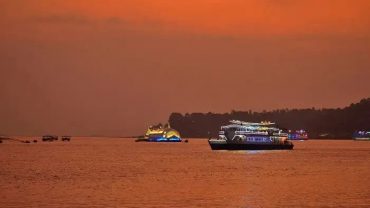Delhi, the capital city of India, is one of the oldest cities in India and also one of the fastest-growing cities in the world. The city attracts national as well as international travellers as part of India tour packages. Historically, the city was known as Indraprastha or Hastinapura, the renowned capital of the legendary Pandavas, which has overwhelming history and rich cultural heritage. The city of Delhi has seen the birth and death of many kings, kingdoms, and dynasties. With the rise of each dynasty, Delhi was beautified by fascinating architecture that has withstood the ravages of time. Red Fort, Jama Masjid, Purana Quila, India Gate, Qutub Minar, Lodi Gardens, Jantar Mantar, Humayun Tomb, Safdarjung’s Tomb, and Rashtrapati Bhavan are the popular historical places to visit in Delhi. However, some of these monuments are recognized as world heritage sites by UNESCO. These heritage monuments attract national as well as international travellers as part of India tour packages.
Here is the list of UNESCO Heritage Sites in Delhi.
Humayun’s Tomb

Humayun’s Tomb is one of the prominent UNESCO World Heritage Sites that one must visit as part of Delhi tour packages. Commissioned by Humayun’s wife, Hamida Banu Begum in 1562, it is the final resting place of Humayun, the second Mughal Emperor, and father of Akbar. It was designed by Mirak Mirza Ghiyath, a Persian architect on the lines of Gur-e Amir, the tomb of Mughal ancestor Timur in Samarkand. Humayun’s Tomb is a fine specimen of the great Mughal architecture, which was inspired by Persian architecture. Surmounted by a large dome built with marble, the octagonal tomb has two double-storied gateways – one on the west and the other on the south. The mausoleum stands in the center of a 30-acre garden known as the Char Bagh and is the first garden-tomb on the Indian subcontinent. The complex of Humayun’s Tomb consists of many small monuments like the tomb of Humayun’s wife, the tomb of Humayun’s barber, Afsarwala tomb and Mosque, Isa Khan Tomb, Bu Halima Garden, and Nila Gumbad. Delhi is one of the most popular India tourist places.
Qutub Minar & its Monuments

Qutub Minar is the magnificent tower of victory stands in the Qutub Complex located at Aurabindo Marg near Mehrauli in Delhi. It is of the must visit heritage sites in Delhi, among the must-include places in Golden Triangle Tour Packages. Considered as the highest tower in India, it is declared as UNESCO World Heritage Site in 1993. Qutub-ud-Din Aibak laid the foundation of Minar in 1199 AD for the use of the Mu’zzin (crier) to give calls for prayer and raised the first storey, to which three more storeys were added by his successor and son-in-law, Shamsud-Din Iltutmish (AD 1211-36). Built in Indo-Islamic architectural style, the minar has a diameter of 14.32 m at the base and about 2.75 m on the top with a height of 72.5 m (234 feet). The first three storeys are made of red sandstone whereas fourth and fifth floors are made of marble and sandstone. All the storeys are surrounded by a projected balcony encircling the Minar and supported by stone brackets, which are decorated with honey-comb design. Also, there is a Quwwat-ul-Islam Masjid at the base of the minar which is considered as the earliest extant mosque built by the Delhi Sultans and consists of a rectangular courtyard with the carved columns and pillars from 27 Hindu and Jain temples which were demolished by Qutub-ud-Din Aibak as recorded in his inscription on the main eastern entrance.
The Red Fort Complex
Situated on the western bank of the River Yamuna, the Red Fort or the Lal Qila is one of the best historical places in Delhi. Delhi is one of the popular honeymoon places in India. Originally called as Quila-i-Mubarak, the fort was built by Shah Jahan between 1638 and 1648 which is enclosed by a rubble stone wall that houses a number of museums. Surrounded by a deep forbidding moat, the Red Fort is in the form of an octagon with long extended walls on the east and west. Declared as UNESCO World Heritage Site in 2007, the fort has two main gateways namely the Lahore Gate and the Delhi Gate, but the entrance is through the Lahore Gate which forms a part of a massive stone fortification and is made up of pink sandstone. Tourists can be a part of sound and light show that takes place every evening which recreates the Red Fort’s history. Besides, this is the place from where the prime minister addresses the nation every year on Independence Day (15 August).






Customer
I have a great interest in computer and aircrafts, especially military aircrafts. I am planning to do computer engineering and be involved in the designing of military aircrafts (aircraft’s computer).. I need to know whether the US Air Force needs computer engineers and if yes, will a computer engineer be wearing uniform and do they have military ranks ?.
https://demo.socialengine.com/blogs/33/13/embrace-the-geek-within-discover-the-ultimate-how-to-hub
Customer
I own a .info web domain hosted on 50webs. I have tried uploading via FTP from Blogger but I keep getting java errors. Is there an easier way of having Blog type software on my website? Or what is your suggestion for the BEST blog site to use that lets you use your own domain as a homepage for your blog..
https://www.vingle.net/posts/6101297
Customer
I don’t think the title of your article matches the content lol. Just kidding, mainly because I had some doubts after reading the article.
Customer
Thanks for sharing. I read many of your blog posts, cool, your blog is very good.
Customer
I love it when people come together and share opinions, great blog, keep it up.
http://www.tlovertonet.com/
Customer
Hurray, this is just the right information that I needed. You make me want to learn more! Stop by my page Webemail24 about Construction Industry.
Customer
Wow! This could be one particular of the most helpful blogs We have ever arrive across on this subject. Basically Wonderful. I am also a specialist in this topic therefore I can understand your hard work.
http://www.tlovertonet.com/
Customer
Thank you for your sharing. I am worried that I lack creative ideas. It is your article that makes me full of hope. Thank you. But, I have a question, can you help me?
Customer
Your article helped me a lot, is there any more related content? Thanks! https://www.binance.info/cs/join?ref=JHQQKNKN
Customer
Can you be more specific about the content of your article? After reading it, I still have some doubts. Hope you can help me. https://accounts.binance.com/uk-UA/register-person?ref=IQY5TET4
Customer
Sweet website , super design, really clean and employ friendly.
https://www.zoritolerimol.com
Customer
twired xyandanxvurulmus.oCNkZxn9rD4b
Customer
Thank you for your sharing. I am worried that I lack creative ideas. It is your article that makes me full of hope. Thank you. But, I have a question, can you help me? https://accounts.binance.com/ro/register-person?ref=YY80CKRN
Customer
daxktilogibigibi.nlmmRTgT5zkh
Customer
Thank you very much for sharing, I learned a lot from your article. Very cool. Thanks. nimabi
Customer
Thank you for your sharing. I am worried that I lack creative ideas. It is your article that makes me full of hope. Thank you. But, I have a question, can you help me? https://www.binance.com/zh-CN/register?ref=JHQQKNKN
Customer
Can you be more specific about the content of your article? After reading it, I still have some doubts. Hope you can help me. https://accounts.binance.com/ro/register-person?ref=P9L9FQKY
Customer
The point of view of your article has taught me a lot, and I already know how to improve the paper on gate.oi, thank you. https://www.gate.io/fr/signup/XwNAU
Customer
Hi, i think that i saw you visited my site thus i came to “return the favor”.I’m attempting to find
things to enhance my site!I suppose its ok to use a few of your ideas!!
Feel free to visit my webpage … jackpot party casino free coins
Customer
If some one wishes expert view concerning running a blog after that i suggest him/her to visit this webpage, Keep up the pleasant work.
Here is my web site download 1xbet ios – Elisa –
Customer
Wow that was unusual. I just wrote an very long comment but after I clicked submit my comment didn’t appear.
Grrrr… well I’m not writing all that over again.
Regardless, just wanted to say superb blog!
Here is my web-site Betway Account Verification – Step-by-Step Guide, https://naasongsnaasongs.in/how-do-i-verify-betway-my-account/,
Customer
This is my first time visit at here and i am genuinely impressed
Ways to Verify Your Bet365 Account – What You Need to Knowbank statement bet365
read everthing at alone place.
Customer
I don’t think the title of your article matches the content lol. Just kidding, mainly because I had some doubts after reading the article. https://www.binance.com/uk-UA/register?ref=GJY4VW8W
Customer
Your point of view caught my eye and was very interesting. Thanks. I have a question for you. https://www.binance.com/id/register?ref=UM6SMJM3
Customer
Your article helped me a lot, is there any more related content? Thanks! https://www.binance.com/es/register?ref=YY80CKRN
Customer
Thanks for sharing. I read many of your blog posts, cool, your blog is very good.
Customer
Thank you for your sharing. I am worried that I lack creative ideas. It is your article that makes me full of hope. Thank you. But, I have a question, can you help me?
Customer
Very nice post. I just stumbled upon your blog and wanted to say that I’ve really enjoyed browsing your blog posts. In any case I’ll be subscribing to your feed and I hope you write again soon!
Customer
I have read your article carefully and I agree with you very much. So, do you allow me to do this? I want to share your article link to my website: Sign Up
Customer
Reading your article helped me a lot and I agree with you. But I still have some doubts, can you clarify for me? I’ll keep an eye out for your answers.
Customer
The Cyprus Turkish Sports Association (Turkish: Kıbrıs Türk Futbol Federasyonu, KTFF) is
the governing body of Liste des présidents de la Fédération de Chypre du Nord de football in the Turkish Republic of Northern Cyprus.
Established on 29 October 1955, during British colonial guideline in Cyprus, it has been associated
with the D.F.-Table from 2003 until the board’s dissolution in 2013.
Since 2013 the KTFF offers happen to be
affiliated with the Confederation of Independent Soccer Links.
Birinci Lig is the top division of the TRNC Basketball Federation.
PRESIDENT KTFF of is Hasan SERTOĞLU.